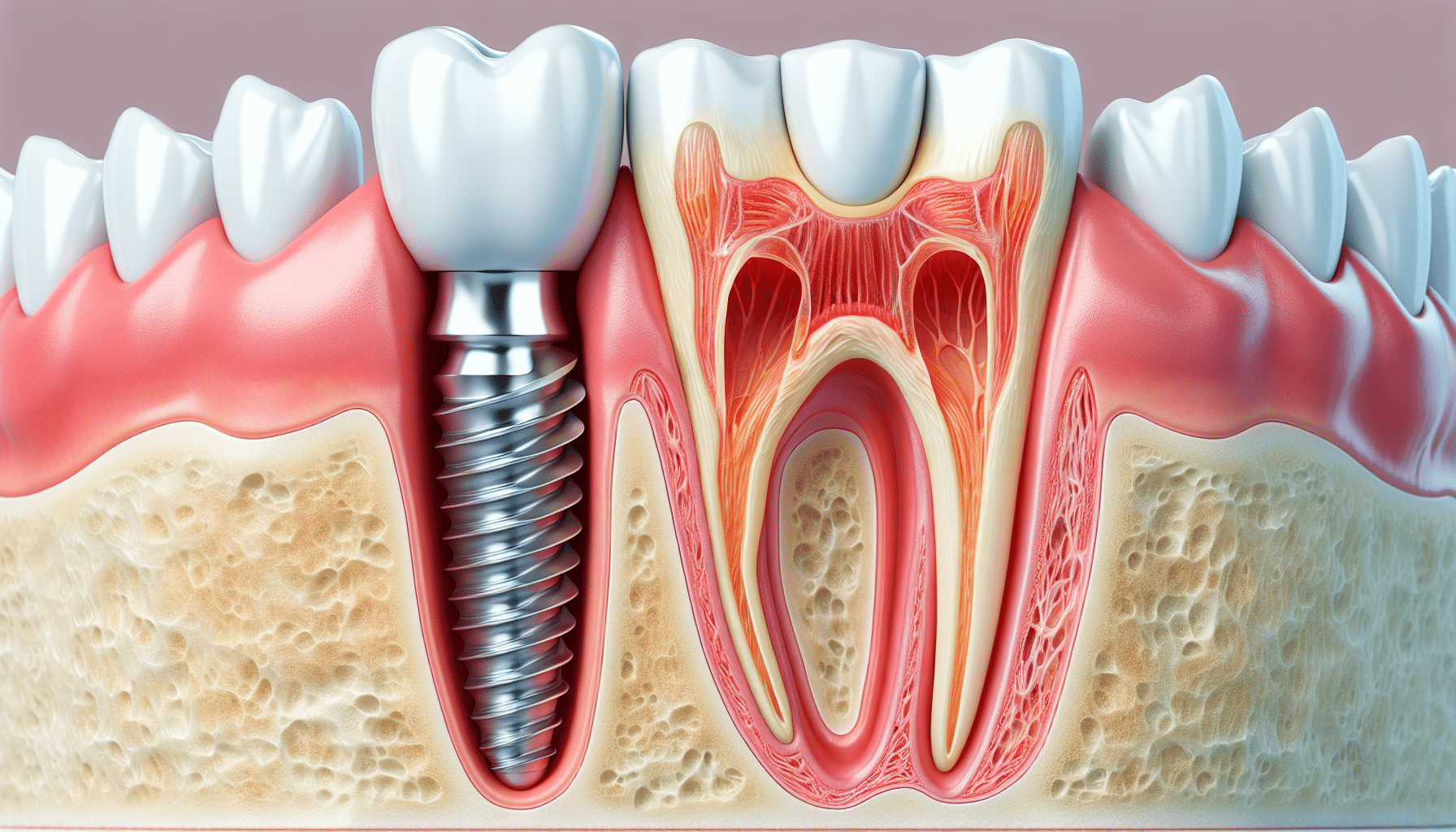The Buzz on Dental Sense
The Buzz on Dental Sense
Blog Article
Some Ideas on Dental Sense You Need To Know
Table of ContentsLittle Known Facts About Dental Sense.Rumored Buzz on Dental SenseThe Ultimate Guide To Dental SenseThe Best Guide To Dental Sense
are medical tools surgically dental implanted right into the jaw to recover a person's capacity to chew or their appearance. They provide assistance for fabricated (phony) teeth, such as crowns, bridges, or dentures. When a tooth is shed because of injury or disease, an individual can experience difficulties such as rapid bone loss, malfunctioning speech, or changes to chewing patterns that cause pain.Dental dental implant systems include an oral implant body and dental implant joint and might additionally include an abutment addiction screw. Cosmetic dentistry services. The oral implant body is surgically inserted in the jawbone in location of the tooth's root. The dental implant joint is usually attached to the implant body by the joint fixation screw and prolongs with periodontals right into the mouth to sustain the affixed artificial teeth
(https://justpaste.it/hj6ob)Framework of The Dental Implant System choosing dental implants, speak with your oral provider about the prospective benefits and risks, and whether you are a prospect for the treatment. Points to think about: Your overall health and wellness is an essential consider figuring out whether you are a great prospect for oral implants, how much time it will take to heal, and the length of time the implant may remain in area.
Smoking might impact the healing procedure and lower the lasting success of the implant. The recovery procedure for the implant body may take several months or longer, during which time you typically have a temporary abutment instead of the tooth. the oral implant procedure: Thoroughly adhere to the oral hygiene instructions offered to you by your dental service provider.
Dental Sense for Dummies
Implant failing can result in the need for one more procedure to take care of or change the implant system. Brings back the ability to eat Brings back cosmetic appearance Assists maintain the jawbone from shrinking as a result of bone loss Preserves the wellness of the surrounding bone and gums Helps keep surrounding (neighboring) teeth secure Boosts lifestyle Damage to bordering all-natural teeth during dental implant placement Injury to the surrounding cells during surgical treatment, such as sinus perforation Injury throughout surgical treatment (as an example, crack of surrounding jawbone) Poor function, such as feeling like the teeth do not bite with each other generally A sensation that the tooth is loosened or twisting in place resulting from a joint screw loosening Implant body failure (looseness of the dental implant body) due to systemic infection, which may be most likely in clients with uncontrolled diabetes mellitus because of regional infection in bone and gums supporting the dental implant body due to delayed healing, which may be most likely in patients that smoke Trouble cleaning up the gums around the dental implant, resulting in inadequate oral hygiene Neglected periodontal condition Post-surgical tingling because of nerve impingement or damages Constantly inform health and wellness treatment carriers and imaging technicians that you have dental implants prior to any type of magnetic resonance imaging webpage (MRI) or x-ray procedures.
FDA is not familiar with any type of negative occasions reported for MRI or x-ray procedures with dental implants. Oral implants systems are commonly made of products that follow global consensus requirements of the International Organization for Standardization (ISO) or ASTM International. These standards have details of what makes a secure product.

A dental implant is a structure that changes a missing out on tooth. With screw-like tools, the doctor inserts a dental implant into the jawbone, and it acts as a support for an artificial tooth, called a crown.
Some Known Factual Statements About Dental Sense
Some people are not qualified for dental implant surgical procedure. It is for dental surgeons to operate people with: intense illnessuncontrollable metabolic diseasebone or soft tissue illness or infectionIf these concerns are solved, an individual can have the surgical procedure. In, dental surgeons abstain from running on people with: If individuals with any one of the above undergo oral implant surgical procedure, there is a greater risk of the implant stopping working.

Dental dental implant surgical procedure is a personalized process. It's not the same for every person. The complying with provides a general review of what you can anticipate your dental practitioner, dental specialist, periodontist or prosthodontist to do: Position the dental implant surgically. Give you time to heal. Connect the post and final crown, bridge or denture.
Next off, your surgeon will carefully position the dental implant into your jaw. If your dental implant is near the front of your mouth, your dental expert will certainly make a short-term tooth for you to put on till you heal.
The 5-Second Trick For Dental Sense
Your supplier can tell you what to anticipate in your circumstance. During the recovery phase, your jawbone needs to fuse to the oral implant. This procedure, called osseointegration, is crucial for stability and long-lasting success. This procedure can take anywhere from three to nine months. In many cases, it might take longer.
When your dental implant heals, your dental professional can connect the abutment (small connector message) and your last remediation (crown, bridge or denture). This normally takes regarding one hour to finish and may need a second small surgery. You should not feel any discomfort during your dental implant treatment due to the fact that your supplier will certainly make use of medication to numb your gum tissues.
Report this page